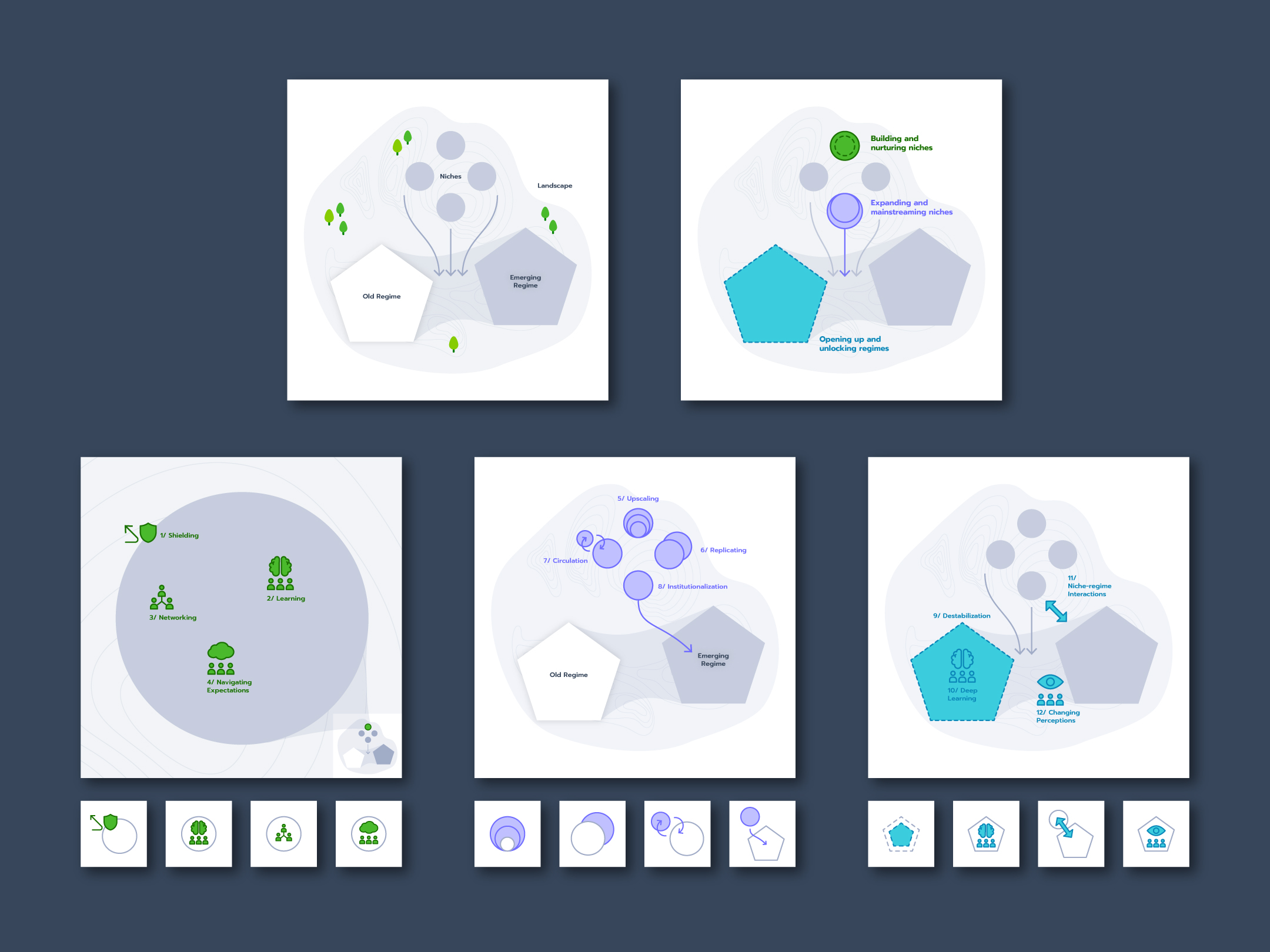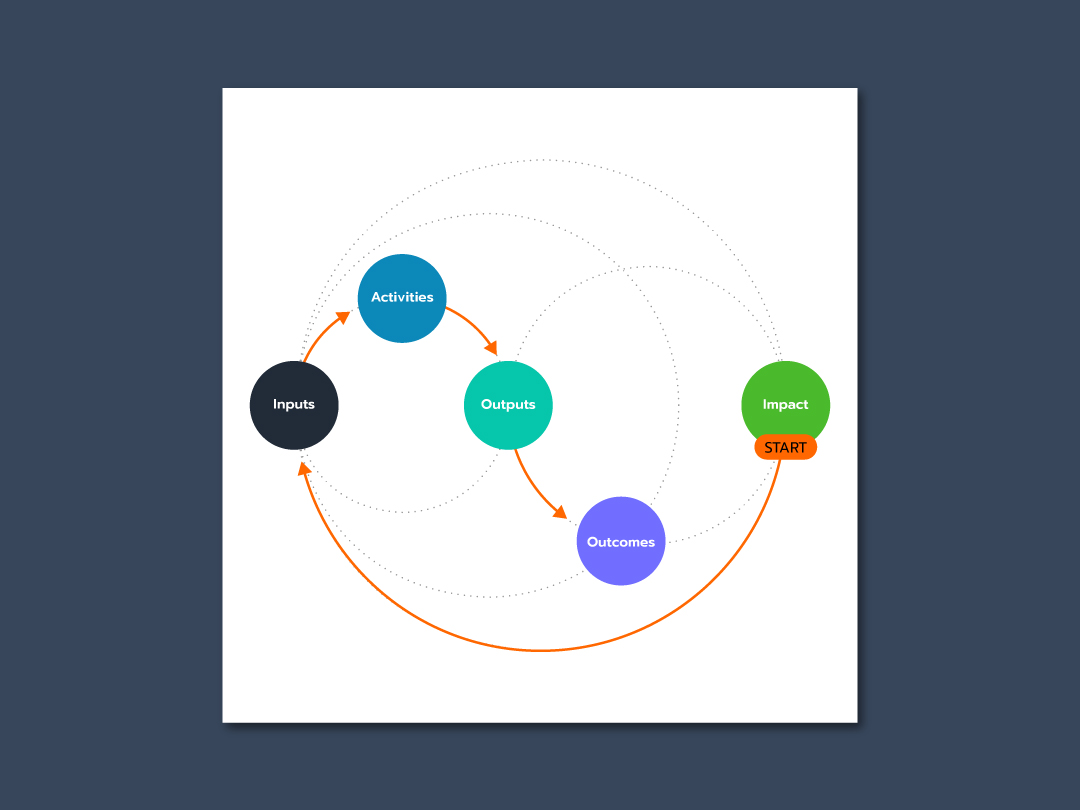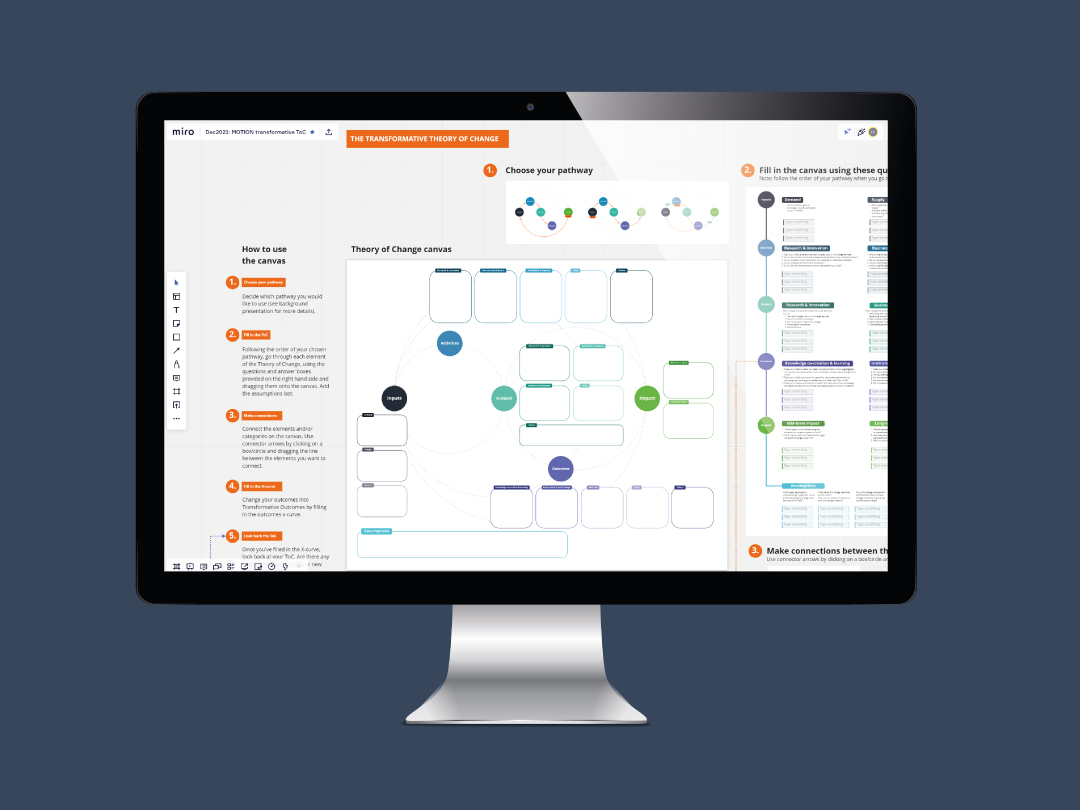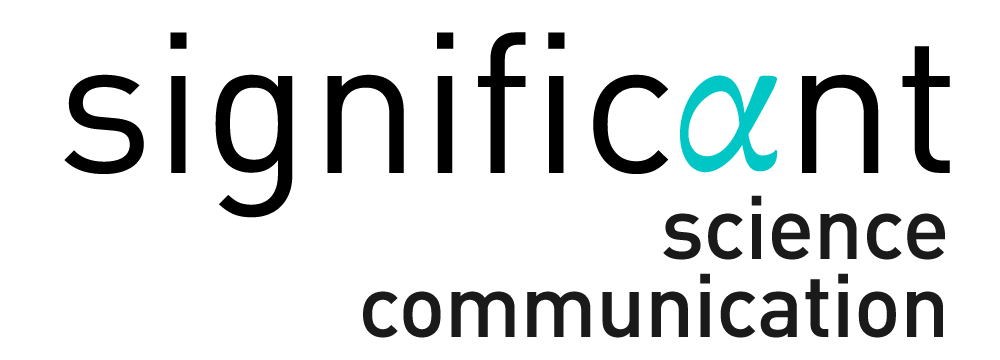Visualizing systems change: tools and figures
for Utrecht University / Centre for Global Challenges
Systems change, not climate change! is a slogan often used on protest signs. But in practice, global systems change is extremely complex and it takes years or decades to fundamentally change an existing system. Several sustainable transitions are currently happening, such as the renewable energy transition.
Systems change is an interdisciplinary field: from researchers to policy practitioners and from architects to economists. To truly change the current unsustainable systems collaboration is crucial, but a methodology that can be applied to the many complex systems that make up our global society is also needed.
The MOTION project developed a methodology based on creating a transformative Theory of Change (ToC). With this ToC interventions can be designed, implemented and evaluated – that contribute to sustainable systems change. The project resulted in a practical handbook (with various figures explaining the underlying theory) and 2 interactive tools, making the complex world of transitions more insightful.
The handbook (draft version) is available for free download via the TIPC website.
PROJECT
Conceptualizing and designing various figures, interactive tool and a handbook about systems change – collaboration with MOTION team and designer Naz Costante.
PRODUCTS
2 interactive tools (Miro boards), various visuals and a practical handbook for digital use.
TOPICS
Systems change, sustainable transitions

Various figures showing how systems change works. To move from an old system (regime) to a new system, innovations (niches) need to be inserted into the system, eventually replacing the old system. This takes place within the bigger global systems (landscape) and can be divided into 3 processes (see top right figure). The MOTION project identified 12 transformative outcomes that can start and accelerate the transition, for example by protecting a niche (shielding), growing a niche (upscaling) and destabilizing the old system (destabilization).

With this transformative Theory of Change, interventions and projects can de designed and evaluated, to reach systems change. The orange line shows one of the many pathways that can be followed in using this tool.

Interactive tool in MIRO, to use the transformative Theory of Change. The tool can be viewed and used here and a description of the tool and theoretical background can be found in the MOTION handbook.
Significαnt
Visual communication of science & sustainability
CONTACT ME
elzemiek@significantcommunication.eu
+31 627 875 365
Registered as: Significant Communication
KvK no: 68857861
DISCOVER MORE
SOCIAL MEDIA
